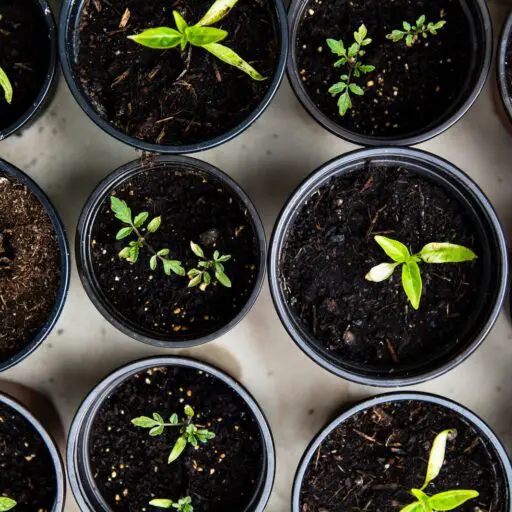Support our educational content for free when you purchase through links on our site. Learn more

Did you know that a single mature tree can absorb up to 48 pounds of carbon dioxide per year? That’s like having a tiny, green carbon-capture machine in your backyard! But the impact of plants on global warming goes far beyond individual trees. This comprehensive guide explores the multifaceted ways plants help reduce global warming, from the intricate process of photosynthesis to the vital role of forests and urban green spaces. We’ll delve into the science behind carbon sequestration, examine different types of plants and their unique contributions, and discuss the challenges and opportunities in leveraging plant-based solutions for climate change mitigation. We’ll even show you how you can get involved! Ready to discover the amazing power of plants in combating climate change? Let’s grow a solution together!
Key Takeaways:
- Plants are nature’s air purifiers: Through photosynthesis, they absorb atmospheric carbon dioxide (CO2), a primary greenhouse gas.
- Forests are giant carbon sinks: They store massive amounts of carbon, preventing it from entering the atmosphere. Protecting existing forests is crucial.
- Different plants have varying carbon sequestration potential: Trees are champions, but shrubs, grasses, seagrasses, and even phytoplankton play vital roles.
- Urban green spaces matter: They mitigate the urban heat island effect and improve air quality.
- Sustainable forestry and reforestation are essential: These practices help restore our planet’s green lungs and increase carbon sink capacity.
- You can make a difference: Simple actions like planting a tree, supporting sustainable forestry, and reducing your carbon footprint can contribute to climate change mitigation.
👉 Shop for Trees and Plants to support climate action:
- The Arbor Day Foundation: Arbor Day Foundation | Amazon Search: Arbor Day Foundation
Table of Contents
The Role of Plants in Carbon Capture and Climate Change Mitigation
Photosynthesis: Nature’s Carbon Dioxide Removal System
Different Types of Plants and Their Carbon Sequestration Potential
- Trees: The Unsung Heroes of Carbon Capture
- Shrubs and Bushes: Small but Mighty Carbon Sinks
- Grasses and Forbs: The Groundcover Guardians
- Seagrasses and Kelp Forests: Ocean’s Carbon Champions
- Phytoplankton: Microscopic Marvels of Carbon Removal
The Impact of Deforestation and Habitat Loss on Global Warming
Sustainable Forestry and Reforestation Efforts: Restoring Our Planet’s Green Lungs
Urban Greenery and Its Contribution to Climate Change Mitigation
How You Can Help: Simple Steps to Support Plant-Based Climate Solutions
The Future of Plants in Combating Global Warming: Research and Innovation
Addressing the Limitations: Challenges and Considerations in Plant-Based Climate Solutions
Quick Tips and Facts 🌱
Did you know that plants are crucial in the fight against global warming? They’re not just pretty faces; they’re actively working to cool our planet! Let’s dive into some fascinating facts:
- Photosynthesis is key: Plants absorb carbon dioxide (CO2), a major greenhouse gas, during photosynthesis. Learn more about this amazing process here.
- Trees are carbon superheroes: A single mature tree can absorb up to 48 pounds of CO2 per year! 🌳 Source: The Arbor Day Foundation
- Forests are giant carbon sinks: They store massive amounts of carbon, preventing it from entering the atmosphere. Protecting existing forests is just as important as planting new ones.
- Urban green spaces matter: Even small parks and street trees can make a difference in reducing urban heat island effects. Read more about the benefits of urban greening here.
- Ocean plants are vital too: Seagrasses, kelp forests, and phytoplankton play a significant role in carbon sequestration in the oceans. Discover the amazing world of ocean plants here.
We at Community Gardening™ believe in the power of plants! Want to learn more about how gardening helps the environment? Check out our related article: How Does Gardening Help the Environment? 10 Surprising Benefits You Didn’t Know About! 🌎
The Role of Plants in Carbon Capture and Climate Change Mitigation 🌎
Plants are nature’s air purifiers, playing a vital role in mitigating climate change. Through the process of photosynthesis, they absorb atmospheric carbon dioxide (CO2), a primary greenhouse gas responsible for global warming. This CO2 is then converted into organic matter, effectively locking away carbon within the plant’s tissues and the soil. This process is known as carbon sequestration.
The Power of Photosynthesis
Photosynthesis is the engine driving this carbon capture. Plants use sunlight, water, and CO2 to produce energy and release oxygen as a byproduct. The more plants we have, the more CO2 is removed from the atmosphere, reducing the greenhouse effect and slowing down global warming.
Think of it like this: plants are like giant, natural air filters, constantly cleaning the air we breathe. The more plants we have, the cleaner and cooler our planet becomes.
Beyond Carbon Sequestration
The benefits extend beyond carbon capture. Plants also help regulate the water cycle through transpiration, releasing water vapor into the atmosphere. This contributes to cloud formation and rainfall, influencing local and regional climates. Furthermore, plants provide shade, reducing surface temperatures and creating cooler microclimates, especially crucial in urban areas.
Photosynthesis: Nature’s Carbon Dioxide Removal System ☀️
Let’s delve deeper into the magic of photosynthesis! This remarkable process is the foundation of plant life and a cornerstone of our planet’s carbon cycle. It’s a complex biochemical reaction, but here’s a simplified explanation:
- Light Absorption: Plants capture sunlight using chlorophyll, the green pigment in their leaves.
- CO2 Uptake: Through tiny pores called stomata on their leaves, plants absorb CO2 from the atmosphere.
- Water Absorption: Plants draw water from the soil through their roots.
- Energy Conversion: Using sunlight as energy, plants combine CO2 and water to create sugars (glucose), their primary source of energy.
- Oxygen Release: Oxygen is released as a byproduct of this process.
This seemingly simple process is incredibly powerful. It’s the reason why plants are essential for life on Earth, and why they are such valuable allies in the fight against climate change. The more efficient photosynthesis is, the more CO2 plants can remove from the atmosphere.
Different Types of Plants and Their Carbon Sequestration Potential 🌳🌿🌾
Not all plants are created equal when it comes to carbon sequestration. Different species have varying capacities to absorb and store carbon, depending on factors like size, growth rate, lifespan, and the type of ecosystem they inhabit.
1. Trees: The Unsung Heroes of Carbon Capture
Trees are the undisputed champions of carbon sequestration. Their large size and long lifespans allow them to store significant amounts of carbon in their wood, leaves, and roots. Old-growth forests are particularly effective carbon sinks, storing vast quantities of carbon over centuries. Learn more about the role of forests in carbon sequestration here.
2. Shrubs and Bushes: Small but Mighty Carbon Sinks
While smaller than trees, shrubs and bushes still contribute significantly to carbon sequestration, especially in diverse ecosystems. They often play a crucial role in soil stabilization and preventing erosion, which further enhances carbon storage in the soil.
3. Grasses and Forbs: The Groundcover Guardians
Grasses and forbs, including wildflowers and herbaceous plants, may not store as much carbon as trees, but they cover vast areas and play a vital role in soil health. Their extensive root systems help improve soil structure, enhancing its capacity to store carbon.
4. Seagrasses and Kelp Forests: Ocean’s Carbon Champions
Don’t forget about our ocean ecosystems! Seagrasses and kelp forests are incredibly efficient carbon sinks, absorbing CO2 from the water and storing it in their tissues and the surrounding sediments. These underwater meadows are vital for ocean health and climate regulation. Learn more about the importance of seagrasses here.
5. Phytoplankton: Microscopic Marvels of Carbon Removal
These microscopic marine plants are responsible for a significant portion of the Earth’s oxygen production and carbon sequestration. They absorb CO2 from the ocean surface, playing a crucial role in the global carbon cycle. Learn more about phytoplankton here.
The Impact of Deforestation and Habitat Loss on Global Warming 💔
Deforestation and habitat loss are major contributors to global warming. When forests are cleared, the stored carbon is released back into the atmosphere as CO2, exacerbating the greenhouse effect. This release of stored carbon is a significant source of greenhouse gas emissions. Source: IPCC
Furthermore, the loss of vegetation reduces the planet’s capacity to absorb CO2, creating a vicious cycle. The destruction of habitats also disrupts ecosystems, impacting biodiversity and further weakening the planet’s resilience to climate change. Protecting existing forests and restoring degraded lands are crucial steps in mitigating climate change.
Sustainable Forestry and Reforestation Efforts: Restoring Our Planet’s Green Lungs 🌳🌱
Sustainable forestry practices and reforestation efforts are essential for combating global warming. Sustainable forestry focuses on managing forests in a way that balances the need for timber and other forest products with the preservation of forest ecosystems and their carbon-sequestering capacity. This includes practices like selective logging, replanting trees, and protecting biodiversity.
Reforestation, the process of planting trees in areas where forests have been lost, is another crucial strategy. Large-scale reforestation projects can significantly increase the planet’s carbon sink capacity, helping to remove CO2 from the atmosphere. Learn more about reforestation initiatives here.
Urban Greenery and Its Contribution to Climate Change Mitigation 🏙️🌳
Even in urban areas, plants can make a significant difference. Urban green spaces, including parks, street trees, green roofs, and vertical gardens, help mitigate the urban heat island effect, a phenomenon where cities are significantly warmer than surrounding rural areas. This is because concrete and asphalt absorb and retain heat, while plants provide shade and cool the air through evapotranspiration.
Urban greening also improves air quality by absorbing pollutants and reducing noise pollution. It enhances the aesthetic appeal of cities, improves mental and physical well-being, and supports biodiversity. Learn more about the benefits of urban greening here.
How You Can Help: Simple Steps to Support Plant-Based Climate Solutions 🙌
You don’t need to be a professional gardener to make a difference! Here are some simple steps you can take to support plant-based climate solutions:
- Plant a tree: Even one tree can make a difference! Participate in community tree-planting events or plant a tree in your yard.
- Support sustainable forestry: Choose wood products from sustainably managed forests.
- Reduce your carbon footprint: Make conscious choices to reduce your overall carbon emissions.
- Advocate for environmental protection: Support policies that protect forests and promote sustainable land management.
- Join a community garden: Connect with your community and learn more about gardening and its impact on the environment. Check out our Community Garden Events for opportunities to get involved!
- Educate others: Spread the word about the importance of plants in combating climate change.
The Future of Plants in Combating Global Warming: Research and Innovation 🔬🌱
Research and innovation are crucial for maximizing the potential of plants in combating climate change. Scientists are exploring various strategies, including:
- Developing climate-resilient plant varieties: Creating plants that can withstand extreme weather conditions and thrive in changing climates.
- Improving carbon sequestration techniques: Developing methods to enhance the ability of plants to absorb and store carbon.
- Exploring the potential of bioenergy: Using plants to produce sustainable energy sources.
- Utilizing advanced technologies: Employing remote sensing and other technologies to monitor and manage forests and other ecosystems more effectively.
Addressing the Limitations: Challenges and Considerations in Plant-Based Climate Solutions 🤔
While plants are powerful allies in the fight against climate change, it’s important to acknowledge the limitations of plant-based solutions. These include:
- Land availability: Large-scale reforestation and afforestation projects require significant land areas.
- Time scales: The effects of planting trees and restoring ecosystems take time to fully materialize.
- Ecosystem complexity: Understanding and managing the complex interactions within ecosystems is crucial for effective carbon sequestration.
- Climate change impacts: Climate change itself can negatively impact plant growth and survival.
Conclusion 🌍

Plants are not just aesthetically pleasing additions to our landscapes; they are essential components of a healthy planet and crucial allies in the fight against global warming. Their ability to absorb CO2 through photosynthesis, regulate the water cycle, and provide shade makes them invaluable in mitigating climate change. While plant-based solutions are not a silver bullet, they are a vital part of a comprehensive strategy to address this global challenge. By protecting existing forests, promoting sustainable forestry practices, engaging in reforestation efforts, and incorporating more green spaces into our urban environments, we can significantly enhance our planet’s capacity to absorb CO2 and mitigate the effects of climate change. Remember, every plant counts! Let’s work together to cultivate a greener, healthier future.
Recommended Links 🔗
Want to take action and support plant-based climate solutions? Here are some resources to help you get started:
👉 Shop for Trees and Plants:
- The Arbor Day Foundation: Arbor Day Foundation | Amazon Search: Arbor Day Foundation
Books on Climate Change and Gardening:
- “The Carbon Almanac: A Global Guide to Climate Change”: Amazon
- “Gardening for a Sustainable Future”: Amazon
FAQ ❓

What role do plants play in absorbing carbon dioxide from the atmosphere?
Plants absorb CO2 through photosynthesis, a process where they use sunlight, water, and CO2 to produce energy and release oxygen. This process effectively removes CO2 from the atmosphere, reducing the greenhouse effect. Different types of plants have varying capacities for carbon sequestration, with trees generally being the most effective.
How efficient is photosynthesis in carbon removal?
The efficiency of photosynthesis varies depending on factors like plant species, environmental conditions (light, water, temperature), and the concentration of CO2 in the atmosphere. However, even small increases in photosynthetic efficiency can have a significant impact on global carbon levels over time.
How can community gardens contribute to reducing global warming through sustainable practices?
Community gardens promote sustainable practices that help reduce global warming. These include:
- Carbon sequestration: Growing plants absorbs CO2 from the atmosphere.
- Reduced food miles: Locally grown food reduces transportation emissions.
- Soil health improvement: Healthy soil stores more carbon.
- Water conservation: Efficient irrigation techniques reduce water waste.
- Waste reduction: Composting reduces landfill waste and produces valuable soil amendments.
- Community engagement: Raising awareness about climate change and sustainable practices.
What are some easy ways to get involved in local gardening initiatives to help combat climate change?
There are many ways to get involved:
- Join a community garden: Many communities offer opportunities to participate in gardening projects. Check out our Community Garden Policies for more information.
- Plant a tree: Participate in tree-planting events or plant a tree in your yard.
- Support local farmers markets: Buy locally grown food to reduce transportation emissions.
- Advocate for green spaces: Support initiatives to increase green spaces in your community.
Can urban gardening and green spaces significantly impact the reduction of greenhouse gas emissions in cities?
Yes, urban gardening and green spaces can significantly impact the reduction of greenhouse gas emissions in cities. They help mitigate the urban heat island effect, improve air quality, and increase carbon sequestration. Even small green spaces can make a difference.
What are the limitations of relying solely on plants to combat climate change?
While plants are crucial, relying solely on them is insufficient. Their effectiveness is limited by factors like land availability, time scales, ecosystem complexity, and the impacts of climate change itself. A comprehensive approach combining plant-based solutions with other strategies like reducing fossil fuel emissions is necessary.
Reference Links 📚
- NASA Earth Observatory: https://earthobservatory.nasa.gov/features/LAI/LAI2.php
- The Arbor Day Foundation: https://www.arborday.org/fighting-climate-change
- Columbia Climate School: https://news.climate.columbia.edu/2011/02/12/how-plants-could-impact-global-warming/
- IPCC: https://www.ipcc.ch/report/ar6/wg3/
- EPA: https://www.epa.gov/climateimpacts/climate-change-impacts-forests
- NOAA:
- Seagrass LI: https://www.seagrassli.org/seagrass-facts/
- US Forest Service: https://www.fs.fed.us/research/people/index.php?alias=Nelson
- National Geographic:
- EPA Urban Forestry: https://www.epa.gov/climate-change-water-sector/green-infrastructure-program



